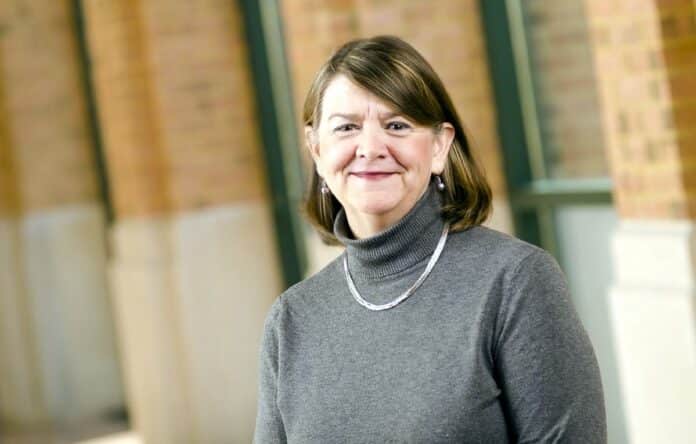
Columbus Regional Health has joined a national effort to transfuse antibodies from the plasma of COVID-19 survivors to treat patients who are struggling to survive the virus.
The treatment, called convalescent plasma therapy, is a century-old therapeutic strategy that has been used to combat the flu and measles before the advent of vaccines, and more recently against MERS, SARS and Ebola.
With no approved treatment for COVID-19 and more than 31,000 deaths in the United States, including at least five in Bartholomew County, the unproven therapy is said to offer a glimmer of hope in the fight against a virus that researchers and doctors are just beginning to understand.
This week, CRH officials said they had administered the therapy to two COVID-19 patients with life-threatening infections at Columbus Regional Hospital.
[sc:text-divider text-divider-title=”Story continues below gallery” ]
As of Thursday, there were 12 patients in isolation at Columbus Regional Hospital with COVID-19, with two listed in "critical-stable" condition and 10 in stable condition. A total of five CRH patients with the virus have died since the start of the pandemic.
“After our experience with some of these critically ill patients, particularly those in the ICU, and finding that frustration that we just don’t have great treatment for COVID-19 at this point — and that’s really a nationwide statement, nobody has great treatment — we looked through all the research to see if we could find what we felt like would be some additional therapy we could offer,” said Dr. Raymond Kiser, medical director of hospital care physicians at CRH.
“This really is the first virus that we’ve had (in Columbus) where we didn’t have other therapy to treat it,” he added.
The search for additional therapy led CRH officials last week to join a national trial led by the Mayo Clinic that seeks to expand access to convalescent plasma therapy in the United States, Kiser said.
CRH has partnered with blood research institute Versiti to supply donated plasma.
“This is a very large, world-renowned clinic basically reaching out to community hospitals and saying, ‘We’d like to include you in this very active and exciting research,’” Kiser said. “…There are almost 300 clinical therapeutic trials going on right now, but most of those are restricted to university settings.”
How it works
A growing number of hospitals are investigating convalescent plasma therapy, as well as a host of other potential treatments, in an effort to find something — anything — to combat COVID-19.
Doctors and drug companies have launched 119 trials for potential treatments in the United States, according to the U.S. National Library of Medicine. The development of effective treatments for the new coronavirus is seen as a crucial step in returning the United States, and much of the world, to normalcy.
Convalescent plasma therapy involves giving COVID-19 patients an infusion of blood plasma from people who have already recovered from the illness, CRH officials said.
The key to the therapy centers around proteins in blood plasma called antibodies, which are produced by the body’s immune system to fight an infection, according to the Mayo Clinic. Some antibodies can neutralize a virus, while others can alert other cells to attack the virus.
People who recover from COVID-19 are thought to still have antibodies specific to the new coronavirus in their blood after the infection clears.
Though it currently is not known how COVID-19 antibodies work, researchers and doctors believe that plasma from COVID-19 survivors could boost the immune system’s response in a patient whose body is struggling to fight off the infection.
The end result, CRH officials hope, is that the therapy could serve as a lifeline for patients by shortening the length or lessening the severity of the illness.
However, it is too soon to say how long it might take patients to show improvement after receiving the therapy, said Dr. Pam Robertson, a pathologist and medical director of the CRH Blood Bank.
“It is investigational, so we don’t know how it’s going to work and it is presumptive that those antibodies are there,” Robertson said. “Currently, one of the problems is that we don’t have an antibody test. …It’s presumptive that it has these antibodies, and we certainly hope that it does and will have a good effect for each individual.”
So far, preliminary research has shown some promise.
Findings published last month in the Journal for the American Medical Associations found that five critically ill patients with COVID-19 at a hospital in China who received convalescent plasma therapy saw significant health improvements.
After receiving a plasma transfusion, the body temperature of four of the patients normalized within three days and viral loads decreased and respiratory failure caused by widespread inflammation in the lungs was resolved within 12 days, the study authors said.
Another study, published in the Proceedings of the National Academy of Sciences, found similar results in 10 patients in China.
The applicability of the studies’ findings, however, may be limited by the small number of patients observed.
“It is anecdotal, but saying that, convalescent plasma has been used in other diseases in the past,” Kiser said. “Although it is a novel therapy for COVID-19, it is a therapy that has previously been used with success in other diseases and viruses.”
Searching for donors
Before more patients at CRH can receive the therapy, doctors need to find one thing: donors.
Blood centers across the have been increasing efforts to collect convalescent plasma from COVID-19 survivors, but are calling for more donations as demand increases.
CRH officials, for their part, are urging COVID-19 survivors to donate plasma so they can offer the therapy to as many patients as possible, including patients who have yet to experience respiratory or multi-organ failure.
One donor may be able to supply two to three patients with a potentially lifesaving treatment, CRH said.
“The issue is that until we get a larger pool of people who have donated their plasma, we’re a little bit restricted in who we can give it to, so we do have to prioritize the most critically ill for now,” Kiser said.
Donors must be at least 18 years old, weigh at least 110 pounds, have a confirmed COVID-19 diagnosis by physician and laboratory testing and are symptom free for 28 days, according to CRH.
Eligible donors will be able to donate at a Versiti Blood Bank location in Indianapolis, and their plasma will be used to treat patients in Bartholomew County and surrounding areas, CRH said.
“The blood is actually drawn off like anyone would give a normal blood donation, and there’s a machine that spends it down and the red cells are actually given back to the individual so you’re just giving the plasma,” Robertson said.
CRH officials said they need donors of all blood types in order to have plasma available to as many patients as possible.
“We may have someone sitting here with a specific blood type, but if there is not a compatible donor, then we’re not really able to do anything about it,” Kiser said. “So the more people that we can get to go and donate, then we will begin having all the compatible types will be needed.”
On the frontlines
Health workers at Columbus Regional Hospital have been working around the clock to treat patients with COVID-19, attempting any treatment they can to keep the seriously ill alive.
Many doctors around the country, including in Columbus, are relying on “supportive care” to treat COVID-19 patients, which centers around helping patients breath when the oxygen levels in their blood starts to drop, The Associated Press reported.
One factor that makes COVID-19 particularly challenging to treat — and potentially deadly — is the havoc that it can wreak deep inside the lungs, Kiser said.
Lungs contain tiny air sacs called that pass oxygen into blood vessels. COVID-19 can invade the lungs and inflame the air sacs to the point that they fill with fluid, dead cells and other debris that prevent oxygen from getting through, according to the Associated Press.
“One of the biggest findings is that we have difficulty getting enough oxygen to these patients,” Kiser said. “Initially, they may just require supplemental oxygen through the nasal cannula, the little tubing that goes through your nose. But as the disease progresses, that becomes more severe to the point where then we may have to put them on a ventilator and put a breathing tube down into the lungs. Even sometimes with that, we have difficulty supplying enough oxygen. With severe cases, we can put them on 100% oxygen and yet still not able to get enough oxygen across the damaged lung tissue in a concentration high enough in their blood to support their normal, healthy tissue.”
Lung scans of COVID-19 patients have shown patterns of infection but have offered few clues as to how to treat the illness, according to The Associated Press. Other reports suggest that the damage inflicted by the new coronavirus could extend beyond the lungs to the kidneys, heart and other organs.
“In the most extreme cases, it will lead to what we call septic shock and multi-organ system failure where because of how sick they have become, not only are we having problems with the lungs, but their heart is affected, their kidneys become affected and essentially almost any tissue at that point can be damaged,” Kiser said.
“Unfortunately, I feel like I’ve seen all of that now.”
Kiser has been one of many doctors on the frontlines of the pandemic in Bartholomew County. So far, it has been the most challenging and rewarding experience of his medical career, he said.
“It is definitely emotionally and physically draining,” Kiser said. “Even though we’re probably seeing less patients, it takes more time with all the protective equipment that we have to put on to go in and see each patient. Even after you take it off, the amount of handwashing that you do. We always did it, but now I’ll spend a minute scrubbing from my fingers up to my elbows after each one just trying to make sure when I go home each night that I really have done everything I could not to bring this illness back home. …We want to serve our community, but at the same we’re always concerned, ‘Well, how much of a risk am I putting my loved ones at?’”
As the pandemic progresses, only time will tell how effective convalescent plasma therapy will be at treating COVID-19.
But if the therapy proves successful, it may help Bartholomew County, and much of the world, stave off the worst of the pandemic.
[sc:pullout-title pullout-title=”How to donate” ][sc:pullout-text-begin]
Columbus Regional Health is seeking potential donors for the Expanded Access Convalescent Plasma Program.
Potential donors who are eligible for the program will be able to donate at a Versiti Blood Bank location in Indianapolis, and their plasma will be used to treat patients in Bartholomew County and surrounding areas.
In order to donate, a person must be at least 18 years of age, weigh at least 110 pounds and meet the following additional requirements:
- Have had a confirmed diagnosis of COVID-19 by physician and laboratory testing
- Must be symptom free for 28 days before being eligible to donate
- If symptom free for 14-27 days, a negative test must be verified
Anyone with questions about the donation process or the Expanded Access Convalescent Plasma Program is encouraged to contact our COVID-19 Triage Resource Center at 812-379-4449 or visit: crh.org/plasma.
[sc:pullout-text-end]




